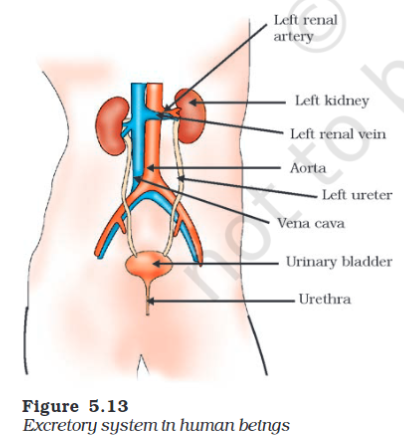Definition
The excretory system of humans comprises of:
- Pair of Kidneys
- Pair of Ureters
- Urinary Bladder
- Urethra

It mostly removes nitrogenous wastes which come from protein breakdown in the form of Urea. The waste products from the blood is filtered out and urine is produced.
Types of Nitrogenous Wastes
- Ammonia (aquatic organisms, fishes)
- Uric Acids (Birds)
- Urea (Mammals) Here, in terms of toxicity, ammonia > urea > uric acid
The Process
- Blood goes to the kidneys through the renal artery
- Glomerulus filters the blood.
- Bowman’s Capsule collects the filtered blood, sends it for reabsorption
- Substances like glucose, amino acids, water, etc. are reabsorbed in the tubule.
- Urine is formed and sent via collecting duct and ureters to the urinary bladder.
Nutshell
- Glomerules Filtration - Glomerules
- Tubular Reabsorption - PCT, Henle’s Loop, DCT
- Tubular Secretion
The amount of water re-absorbed depends on how much excess water there is in the body, and on how much of dissolved waste there is to be excreted.
Hemodialysis
Backlinks
Flashcards
Why is urine produced?;;The waste products from the blood is filtered out and urine is produced.
What does the excretory system in human consist of? ?
- Pair of Kidneys
- Pair of Ureters
- Urinary Bladder
- Urethra
What is the excretory process in the kidneys? ?
- Blood goes to the nephrons through the renal artery.
- Glomerulus filters the blood.
- Bowman’s Capsule collects the filtered blood, sends it for reabsorption
- Substances like glucose, amino acids, water, etc. are reabsorbed in the tubule.
- Urine is formed and sent via collecting duct and ureters to the urinary bladder.
The amount of water reabsorbed depends on what?;;The amount of water re-absorbed depends on how much excess water there is in the body, and on how much of dissolved waste there is to be excreted.